Special Reports
The Digital Concert Hall: A Virtual Venue, Literally
![]() The Berlin Philharmonic performs in three different spaces: The Philharmonie, the Philharmonie’s Chamber Hall, and the DCH
The Berlin Philharmonic performs in three different spaces: The Philharmonie, the Philharmonie’s Chamber Hall, and the DCH
When the Berlin Philharmonic launched its Digital Concert Hall in 2008, most home computer screens were not equipped to accommodate an HD signal. Technology having developed several light years since, the DCH is now available in full HD across all platforms, including four kinds of smart TVs. The latest app, for Apple devices, has received some 700,000 downloads since its launch last August.
And if that’s not enough proof of the Hall’s rise in an otherwise nascent market, DCH’s subscriber base has an annual growth rate of 25 to 30 percent.
The mission and the funding to support it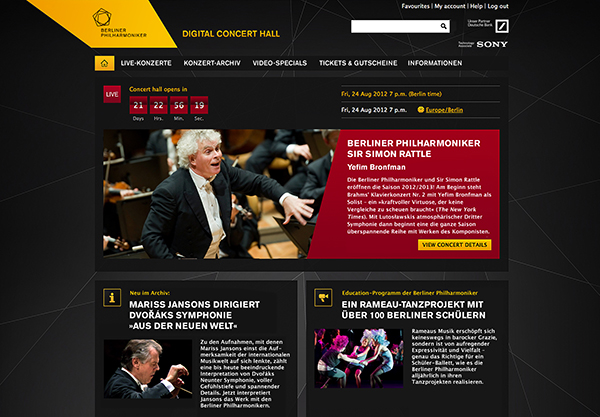 DCH is the brainchild of solo cellist Olaf Maninger. As the orchestra’s general manager of media, he had been looking for a secure media presence for the BPO, as options for commercial recording and televised concerts continued to shrink across both Europe and the U.S.
DCH is the brainchild of solo cellist Olaf Maninger. As the orchestra’s general manager of media, he had been looking for a secure media presence for the BPO, as options for commercial recording and televised concerts continued to shrink across both Europe and the U.S.
“It’s a logical alternative for a famous orchestra like the Berlin Philharmonic to take matters into its own hands,” says Robert Zimmermann, managing director of Berlin Phil Media GmbH, a department that oversees the orchestra’s media, from the Digital Concert Hall to its recently founded in-house label. “Classical music was being pushed farther and farther to special interest channels,” he continues. “The Digital Concert Hall is an attempt to reverse that. We want to be available for our fans any time and have enough visibility so that we don’t disappear.”
Where tradition meets innovation Artistically, the Berlin Philharmonic is a pillar of tradition, but it also has been at the forefront of recording technology for over a century. In 1913, conductor Arthur Nikisch led the first recording of a complete symphony, with Beethoven’s Fifth. In 1982 Herbert von Karajan and the orchestra released the first classical CD, a recording of Strauss’s Alpine Symphony. The conductor—whose catalogue of some 800 audio and 90 filmed performances still makes him one of the most recorded artists in history—founded his own film company, Télémondial, in 1982, sometimes joining in the editing and post-production process himself. He was also known for his savvy in recruiting sponsors for ambitious productions, namely in Japan. And it was at Karajan’s insistence that the Philharmonie, which opened in 1963, was built with a total of six studios, one of which is now used as a control room for the DCH.
Artistically, the Berlin Philharmonic is a pillar of tradition, but it also has been at the forefront of recording technology for over a century. In 1913, conductor Arthur Nikisch led the first recording of a complete symphony, with Beethoven’s Fifth. In 1982 Herbert von Karajan and the orchestra released the first classical CD, a recording of Strauss’s Alpine Symphony. The conductor—whose catalogue of some 800 audio and 90 filmed performances still makes him one of the most recorded artists in history—founded his own film company, Télémondial, in 1982, sometimes joining in the editing and post-production process himself. He was also known for his savvy in recruiting sponsors for ambitious productions, namely in Japan. And it was at Karajan’s insistence that the Philharmonie, which opened in 1963, was built with a total of six studios, one of which is now used as a control room for the DCH.
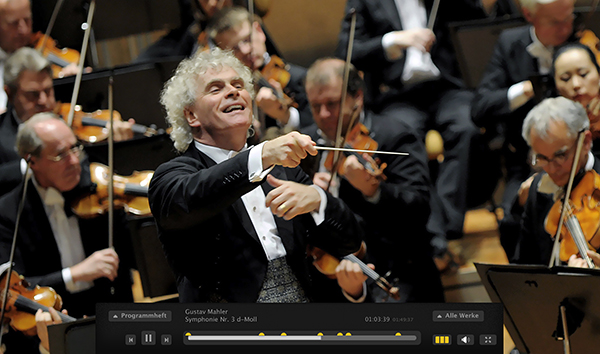 With such a reputation, it’s no surprise that the orchestra was able to win support for its Digital Concert Hall not just from the Deutsche Bank, which recently renewed its contract for another five years of funding, but also from Sony, which in 2012 provided the state-of-the-art HD cameras and microphones that are mounted around the auditorium and stage.
With such a reputation, it’s no surprise that the orchestra was able to win support for its Digital Concert Hall not just from the Deutsche Bank, which recently renewed its contract for another five years of funding, but also from Sony, which in 2012 provided the state-of-the-art HD cameras and microphones that are mounted around the auditorium and stage.
The virtual venue
From the beginning, says Zimmermann, the goal of the DCH was to create a full concert experience; lighting would remain unchanged and cables would not wind around the stage. Online, the viewer would be virtually in a concert hall. Thus the Berlin Philharmonic would have three venues: The Philharmonie, the Chamber Hall, and the Digital Concert Hall. “We wanted to create a virtual place that would be treated as a concert hall,” he explains. “We never talked about live streaming [directly] on our web site—that is a marketing instrument.”
The main challenge was convincing musicians and the various rights holders to cooperate. Initially some of the players were nervous about the perceived unreliable sound quality of an Internet connection and with being captured live on camera. But by involving them and all the affected parties in the project from the beginning, and by making a special effort toward transparency in the distribution of revenues, the players and rights holders were soon convinced of the project’s worth. By now, says Zimmermann, recording for web stream has become part of the everyday: “I think we took the right path because everyone feels involved and has a part in the success of the project.”
A plethora of platforms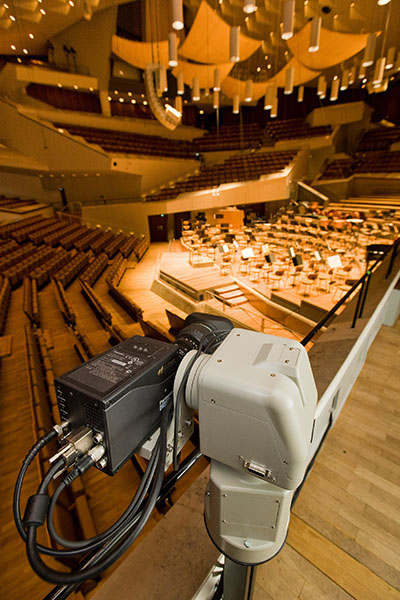 In 2010, Sony worked with the DCH to develop an app for its smart TVs. By 2013 there were apps for Samsung, LG, and Panasonic, covering altogether about 60 percent of the general smart TV market. “We never could have predicted that the development of mobile and TV devices would be so rapid,” recalls Zimmermann. “But we had the advantage of having the content.”
In 2010, Sony worked with the DCH to develop an app for its smart TVs. By 2013 there were apps for Samsung, LG, and Panasonic, covering altogether about 60 percent of the general smart TV market. “We never could have predicted that the development of mobile and TV devices would be so rapid,” recalls Zimmermann. “But we had the advantage of having the content.”
Although 30 percent of users watch on mobile devices, over half of those do so through a Wi-Fi connection to their computer or smart TV. The rest are equally divided between smart TVs and computers. Zimmermann considers smart TV the market’s most promising sector. “The usability is always getting better and faster,” he says. “It won’t be long before clients are practically unable to tell the difference between cable and Internet.”
The Hall is also available over TV boxes such as Nexus TV and Amazon Fire. PC-based applications have proved less viable. A Windows 8 app developed last year has been successful on Microsoft tablets but not on desk- and laptops. There will be another attempt, however, when Windows 10 comes out in August.
Where the money goes
With some 21,000 subscribers, over 90 percent of whom hold a 12- month ticket or automatic-update subscription, the Hall is earning enviable revenue in an industry where many organizations stream free-of-charge. But it has yet to do more than break even. About half of the monies are used to pay royalties to the performers and copyright holders. The rest is invested back in the DCH, for technological infrastructure and generating new content.
“The project has to and will stand on its own feet,” says Zimmermann. “It is just a question of how many new projects we want to do. We are currently not making a profit because we are always investing the money in producing new programs.”
Quality meets quantity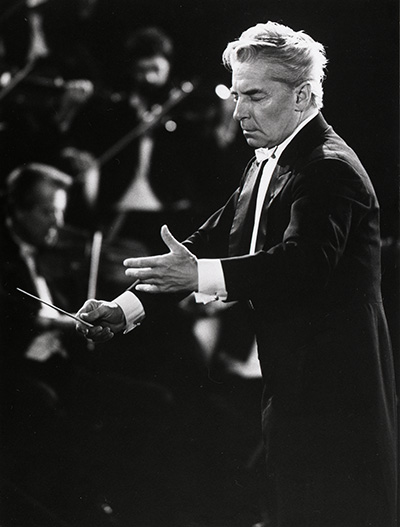 The Philharmonic streams 44 to 50 programs for the Digital Concert Hall a season, which amounts to about one a week. The archive currently holds 332 different concerts, including a total of 891 different classical works. There are also over 200 interviews with guest soloists, conducted mostly by Philharmonic players, and some 40 to 50 documentary and educational programs. The portal last summer added over 20 historic Von Karajan recordings, and his operas from the Salzburg Easter Festival have become some of the most well-visited videos.
The Philharmonic streams 44 to 50 programs for the Digital Concert Hall a season, which amounts to about one a week. The archive currently holds 332 different concerts, including a total of 891 different classical works. There are also over 200 interviews with guest soloists, conducted mostly by Philharmonic players, and some 40 to 50 documentary and educational programs. The portal last summer added over 20 historic Von Karajan recordings, and his operas from the Salzburg Easter Festival have become some of the most well-visited videos.
But the all-time hit remains the 2010 Peter Sellars semi-staging or “ritualization” of Bach’s St. Matthew’s Passion. Zimmermann estimates that 15,000 to 20,000 people have viewed some or all of the performance, which also became the Philharmonic’s first self-produced DVD (it is also available on Blu-ray).
Expanding the media empire, looking ahead
The Philharmonic continues to produce its own DVDs in-house, from Sellars’s 2014 take on the St. John Passion to operas from their Easter Festival in Baden-Baden to a New Year’s concert with Menahem Pressler in 2015.
Last year, the Philharmonic launched its own label, making its products available through its own online store as well as marketplaces such as iTunes and Amazon. The label’s first release of Schumann Symphonies under Music Director Simon Rattle is available as a linen-lined CD box accompanied by a Blu-ray disc including “behind-the-scenes” footage, a download code for the album, and a seven-day pass to the Digital Concert Hall. It is also available on vinyl or as a purely digital download.
“Everything is bundled together,” says Zimmermann. “When you buy something from us, you buy a concert experience.”
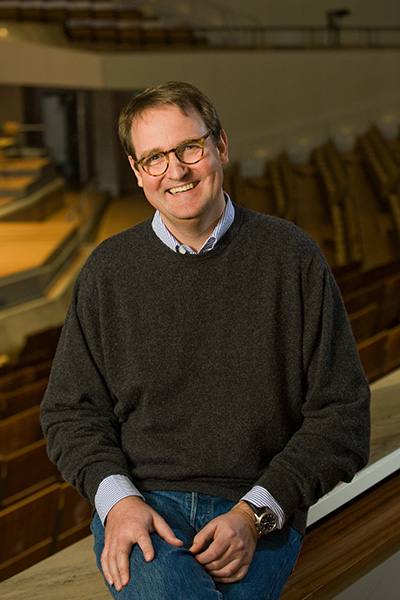 Since 2010, the Philharmonic has also made selected programs available live in HD to movie theaters. It currently streams, by satellite, three performances a season to 80 theaters in Germany and 40 in other European countries. Tickets sell at a rate of about 50 percent to 60 percent in Germany, and slightly less in the rest of Europe. Although the growth rate has remained more or less unchanged over the past three years, Zimmermann considers theaters to be an important channel for distributing the live product and hopes to add additional territories in the future. Other plans for the Digital Concert Hall include streaming content from the Philharmonie that does not necessarily involve the Berlin Philharmonic, be it a chamber music concert or a city festival featuring other orchestras. Also in development is an app in Chinese to meet the demands of that market.
Since 2010, the Philharmonic has also made selected programs available live in HD to movie theaters. It currently streams, by satellite, three performances a season to 80 theaters in Germany and 40 in other European countries. Tickets sell at a rate of about 50 percent to 60 percent in Germany, and slightly less in the rest of Europe. Although the growth rate has remained more or less unchanged over the past three years, Zimmermann considers theaters to be an important channel for distributing the live product and hopes to add additional territories in the future. Other plans for the Digital Concert Hall include streaming content from the Philharmonie that does not necessarily involve the Berlin Philharmonic, be it a chamber music concert or a city festival featuring other orchestras. Also in development is an app in Chinese to meet the demands of that market.
And the next step in visual quality is just around the corner: Zimmermann speculates that they will make the jump from HD (1,080 pixels) to 4K Ultra HD (4,000 pixels), accompanied by high resolution audio, by 2017 at the latest. The future for Berlin’s virtual venue looks—and sounds—bright indeed.
 Rebecca Schmid is a classical music and culture journalist based in Berlin. She writes for the New York Times, Financial Times, Musical America Worldwide, Gramophone, and many other publications.
Rebecca Schmid is a classical music and culture journalist based in Berlin. She writes for the New York Times, Financial Times, Musical America Worldwide, Gramophone, and many other publications.





 FEATURED JOBS
FEATURED JOBS

 RENT A PHOTO
RENT A PHOTO


